Digital freelance job portals have reshaped hiring and staffing, providing a solution that helps both employers and freelancers. And it’s not just tech jobs that are moving into the gig economy; it offers hiring and staffing innovation in sectors like healthcare as well. There has been a shortage of healthcare workers in many parts of the world, and on-demand nurse staffing might be the answer.
The gig economy has matured over the past decade. Harvard Business Review says there are 150 million ‘independent contractors’ in North America and Western Europe. A SunTrust survey also found that 81% of Americans want their ‘side gig’ to be a full-time career, with 54% having taken on a freelance job to earn extra money. In Britain, the booming gig economy doubled from 2016 to 2019, accounting for 4.7 million workers.
Finding the right candidate isn’t the only advantage for employers. Using online marketplace platforms is easier and quicker than finding people through traditional job ads. These platforms create marketplaces that attract the best talent and use predictive analytics to match jobs to expertise. It’s also cheaper to hire temporary workers this way.
Keep reading to discover why developing a prn pool management healthcare staff marketplace is the right business decision, who needs it, and what features it should have. As well as find Demigos case study about developing a custom nurse staffing platform for the US market - GapNurse.
There’s a Shortage of Healthcare Workers Worldwide
 The pandemic exposed the global healthcare system’s poor state, with staffing being one of the issues. The World Health Organization reports there will be a shortage of 9.9 million healthcare workers globally by 2030, with the situation worse in Europe. This is despite a 10% increase in the number of physicians and nurses in Europe over the past 10 years.
The pandemic exposed the global healthcare system’s poor state, with staffing being one of the issues. The World Health Organization reports there will be a shortage of 9.9 million healthcare workers globally by 2030, with the situation worse in Europe. This is despite a 10% increase in the number of physicians and nurses in Europe over the past 10 years.
A report by CNN says that the United States will need to hire 2.3 million new healthcare workers by 2025 to take care of the aging population. And this report includes only doctors, nurses, and nursing assistants.
It’s no longer unusual for healthcare positions to remain unfilled for months or even years, especially in rural areas. In fact, ‘travel nursing’ became common in the US after a nationwide shortage. Employers had to offer higher pay and housing so nurses would relocate.
Even then, healthcare facilities opt to fill the minimum required number of doctors and nurses. This leaves the system weak and in crisis during busy times, like peak influenza season. The deficiency is not limited to doctors and nurses; the industry also lacks clinicians, lab workers, and technicians.
The consequence of understaffing is burnout. A 2018 study found that burnout had reached “rampant levels” among US healthcare workers. Over 50% of physicians and at least one-third of nurses reported exhaustive symptoms, the study says.
Put simply, they’re spending too much time at work. It was also found that the average US physician works 51 hours per week, but not because they want to. A survey by the American Medical Association revealed about 50% of physicians would prefer to work fewer hours.
Healthcare and the Gig Economy – A Business Opportunity

While there is no easy solution, an on-demand healthcare marketplace can help in several ways. The gig economy can make careers in healthcare less stressful and more attractive while making it cheaper for hospitals and clinics to employ staff. You could call it healthcare matchmaking, which would be an excellent startup idea.
Will Patterson, a former ICU nurse, founded CareRev to help with personnel issues in healthcare. He identified staff burnout as a major problem in healthcare but said outsourcing could help. “In particular, outsourcing can provide critical and flexible staffing solutions in key areas that are struggling,” says Patterson.
There’s no doubt creating an on-demand healthcare staffing marketplace is a promising business opportunity, especially in the US and Europe. And if you’re looking at a large market, consider developing a custom travel nursing platform that lets healthcare facilities hire from a nationwide talent pool.
Who Benefits from On-demand Medical Staffing Platforms?
An on-demand workforce platform for healthcare facilities will have a number of user types. The requirements of a healthcare administrator are just as important as the primary caregivers’ they’re employing. Let’s look at what an on-demand solution offers each user.
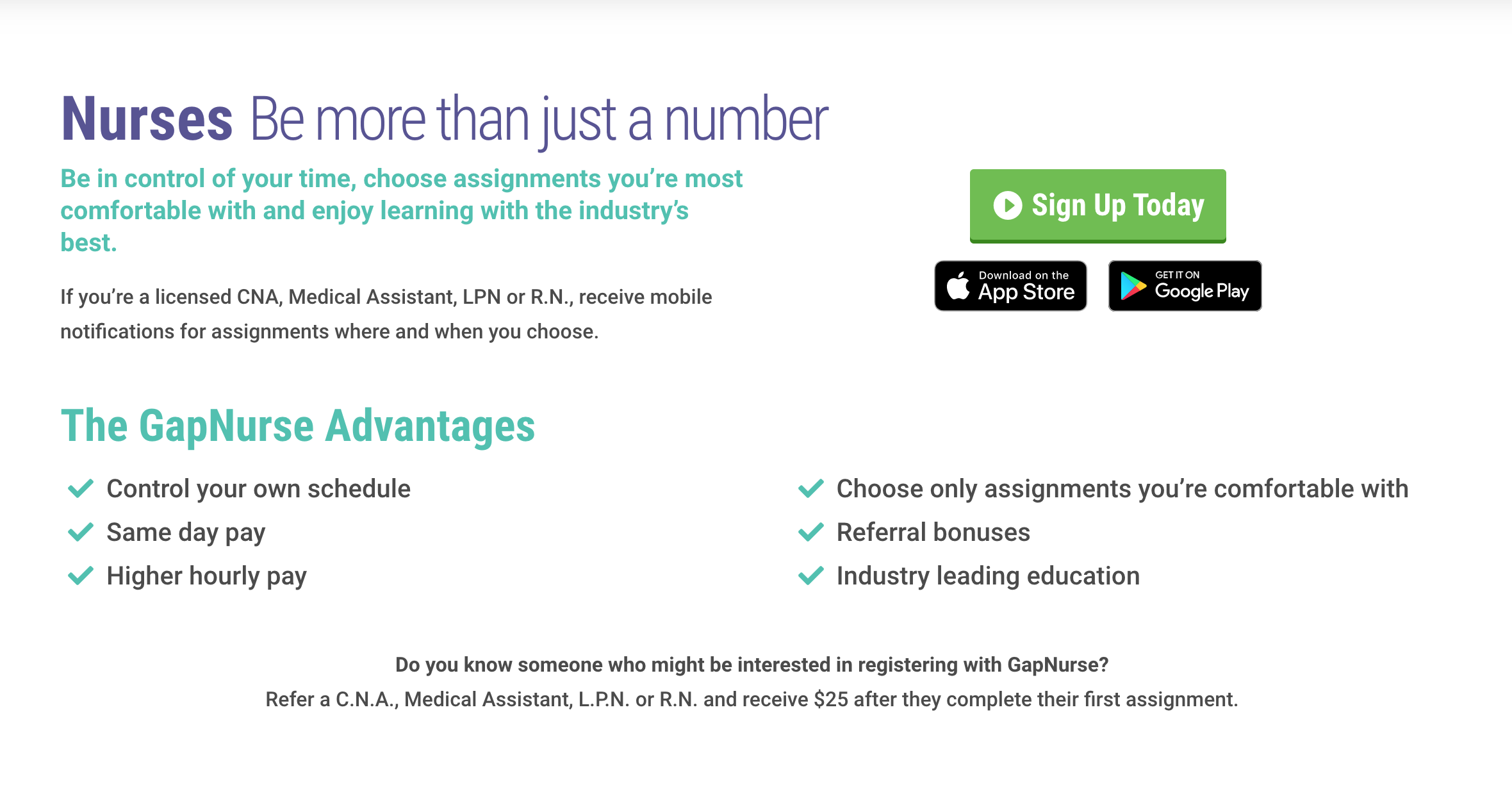
A Physician, Nurse, or Caregiver
The value a platform can provide is a flexible work arrangement that does not limit their earnings. A PRN nurse (per diem nurse), physician, or caregiver will primarily need a great UI to review and accept assignments. The platform will be the only way to do this, so the easier it is to use, the better.
The assignments shown to any user need to match their preferred schedule. Each assignment requires a description, time and date, location, and maybe even verified reviews of the facility by other nurses or physicians.
A user profile is where certification and a resume or proof of qualifications and experience would go. A nurse will be hired based on this, so the platform needs to have a user-friendly workflow of setting up a profile.
Finally, it has to include a flexible payment system. A PRN nurse would expect to be paid daily. Others might prefer weekly payments or once every two weeks.

A Facility Manager
This person would be in charge of a healthcare facility. They’re in charge of all assignments. This means the platform should make it easy for them to create assignments or shifts. For example, an assignment that is recurring for a certain period, say three shifts a week for six months, should be made in a single step without having to set it up every week.
A facility manager will also handle payments and set training requirements for different nursing positions — Certified Nursing Assistant (CNA), Licensed Practical Nurse (LPN) and Licensed Vocational Nurse (LVN), Registered Nurse (RN), Advanced Practice Registered Nurse (APRN), and so on.
As managers, they’re also looking for a way to monitor all shifts at any time. The platform should be intuitive in letting a manager have such an overview. They’ll need ratings and reviews from healthcare workers they hire, like any other business. There could even be an option for notifications if something goes wrong with the assignment.
A Platform Administrator
An administrator needs access to all operations within the platform. They’re part of the management staff and will oversee its use while not actually using it day-to-day. That is why they will need a single dashboard to monitor all things related to on-demand staffing.
It’s typically platform administrators who define user profiles and register regional directors, facility managers, and nurses. It would also be necessary for them to have the rights to edit assignments, view their current standing — new, done, paid — and check ratings.
A Regional Director
A regional director could be the one who makes the decision on using the platform. So, it’s important that they see the value in being able to monitor large healthcare operations through a single digital service.
Regional directors are likely to be responsible for several facilities in a healthcare chain. The platform should help them break down each facility’s performance and set up quality control measures. This user would be the one who’s most likely to appreciate predictive analytics and any business intelligence features the platform might provide.
How to Create an On-Demand Healthcare Staffing Marketplace
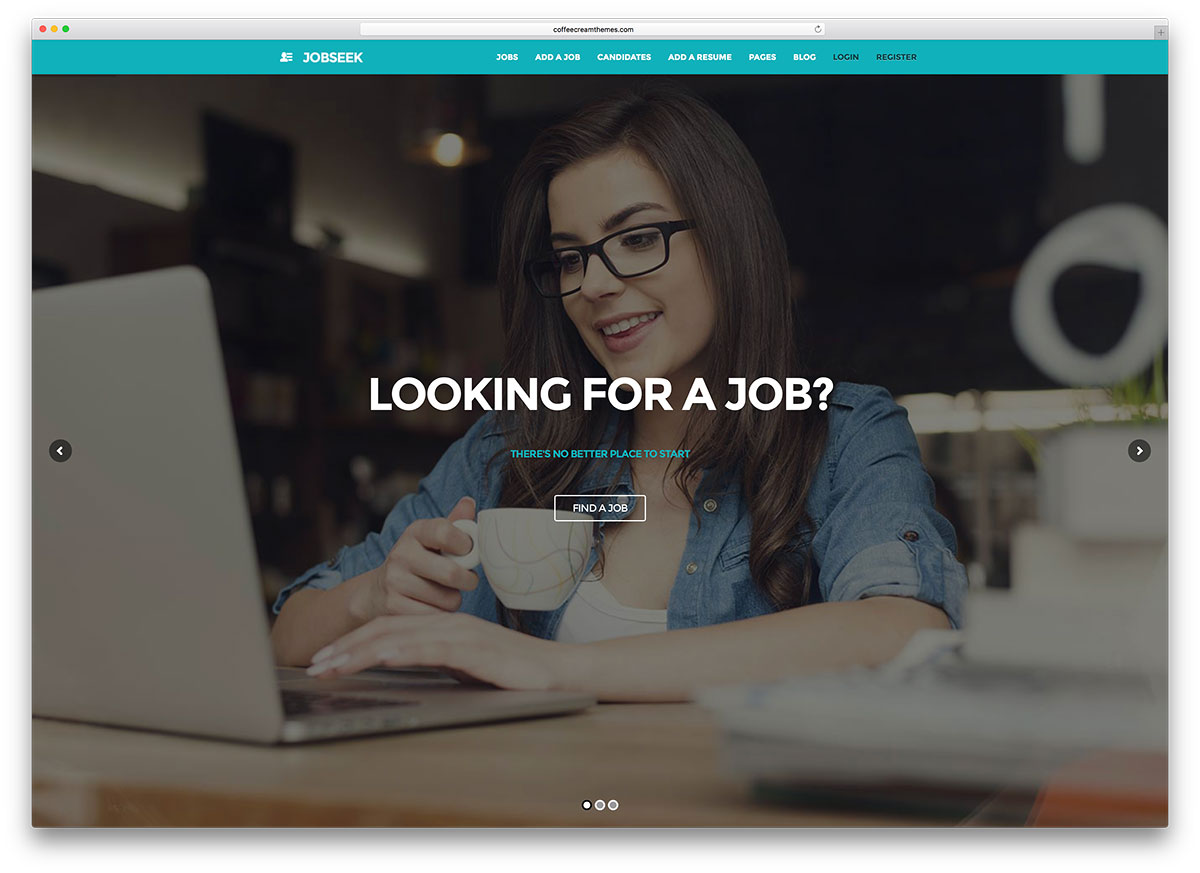
Before developing a nurse staffing platform, you need to handle certain aspects first: prepare detailed requirements, comply with the major healthcare regulations, consider the platform’s scalability and flexibility, and how well it will integrate with other systems.
Clear Understanding of Requirements
You have to be sure of what you’re building. Who is going to use the platform? Are you creating a staffing software solution for a healthcare facility or an on-demand healthcare marketplace? What workflow do you want? How do you want to handle payroll management?
To help the development team build your solution, have the answers to these questions ready. They don’t need to be concrete or final. In fact, it’s best to have a couple of clients or facilities who can test a similar system and give their feedback. This will help improve the platform’s features.
HIPAA and GDPR Compliance
Storing patient data on healthcare platforms requires HIPAA (the US market) and GDPR (the European market) compliance. HIPAA regulates the privacy and protection of health information, while GDPR governs all matters related to data privacy in the EU. Make sure to comply with both.
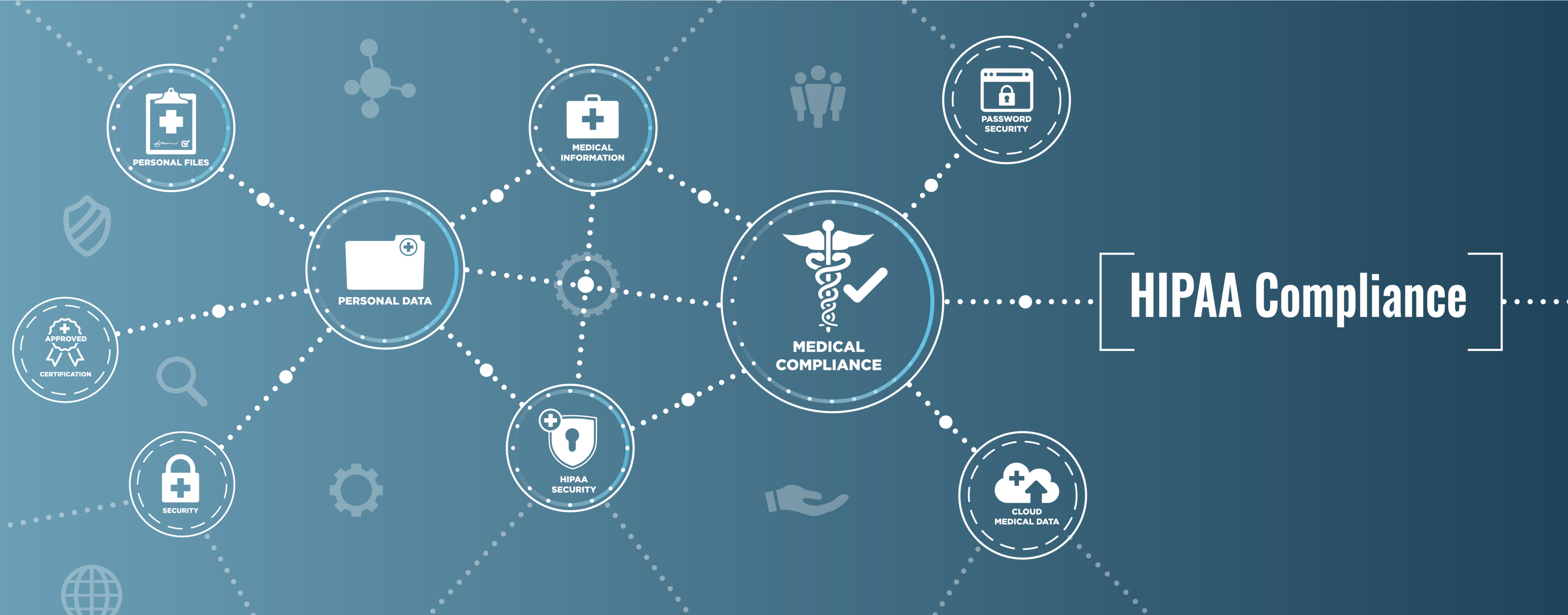
Scalability and Flexibility
As with any business, you should be prepared to scale the platform as needed. You might build a minimum viable product first, but ensure it can handle a request increase. An administrator who manages multiple facilities must find it just as useful as the one who manages a single clinic or hospital.
And since the platform will have to adapt to a variety of customer needs, be prepared for changes in functionality. Adding and altering features according to user feedback shouldn’t be a problem.
Integration
A new platform must play nice with the other systems your clients are using, be it a billing system or an established assignment service. Being able to share data with or pull information from existing platforms or services will help them adapt to your platform faster.
On-Demand Healthcare Staffing Platform Features
Digital marketplaces already have defining features users expect. So, your on-demand nurse staffing platform needs to be healthcare-focused on top of providing the usual functionality.
Assignments
This section includes the most basic workflow. Facility managers need the ability to create assignments or pull them from another system to your platform’s workflow. Once this step is done, it should be visible to the nurses or caregivers whose schedules fit the assignment. They need to be able to pick up the assignment or shift, check the facility’s location, and check-in or -out of their shift.
A variation of this would be the option to create multiple or repeating assignments at one time. For example, a patient needs a nurse for six months, between 10 AM and 1 PM, three times a week. A facility manager should have the ability to add this without having to duplicate information for each instance.
Scheduling
The advantage of an on-demand medical jobs marketplace is flexibility. Nurses should have an option of setting up schedules to indicate the days and time they’re available and make changes if they need. As for facility managers, they should be able to view all assignments in their calendar to see which ones are unfilled. To avoid any confusion, real-time updates are crucial.
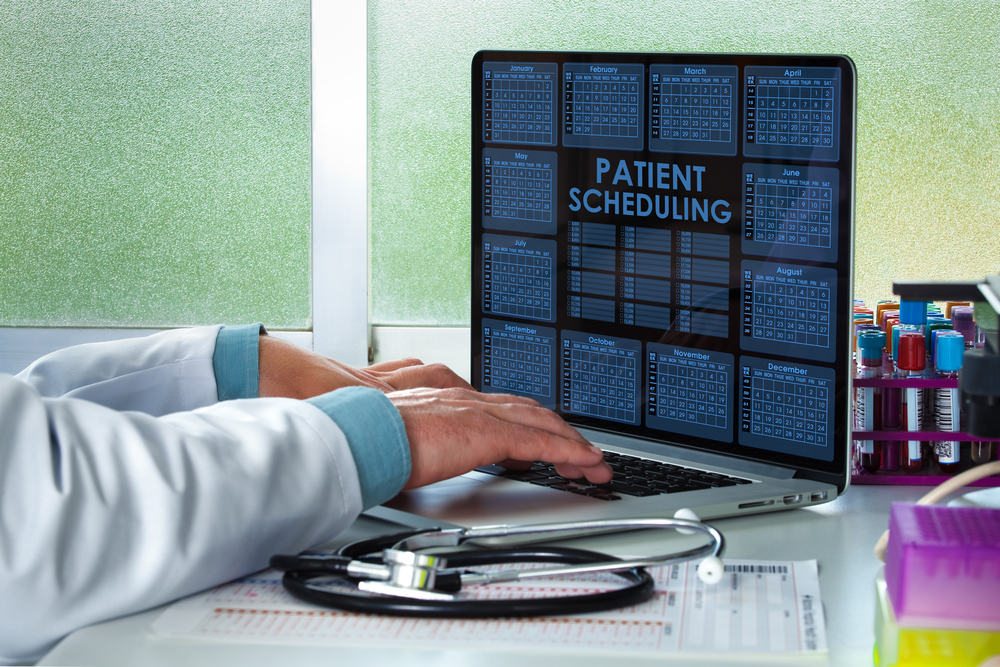
Payments and Rates
Nurses need the function of adding a payment method of their choice, like a bank account. There should be options to receive payments on the same day, end of the week, or once every two weeks. Per diem nurses often prefer same-day payment or right after their shift is over, so flexible payments would attract more nurses to the platform.
Regional directors need permission to define rates for each facility. The facility manager should then be able to determine rates for all assignment types, which can also be edited by a regional director. These functions would set a workflow that provides only the required permission for each management role.
See more about billing solution integration into EHR systems.
Training and Education
Each type of job or assignment requires specific certifications, so only nurses with the right qualifications should be allowed to apply. Typically, facility managers monitor this and set up training for each position.
Ratings and Feedback
For every assignment or client, there should be a way to provide feedback, including open-ended notes. If you consider what you’re building to be an Uber-like staffing platform in healthcare, it’s easy to see why ratings and feedback are useful.

These are the essential features a nurse staffing platform should have. Believe us, we know this from experience.
You’re welcome to read our article on how to build a custom home care software solution as well as integrate telehealth into existing healthcare software.
Demigos’ Experience Developing a Nurse Staffing Platform
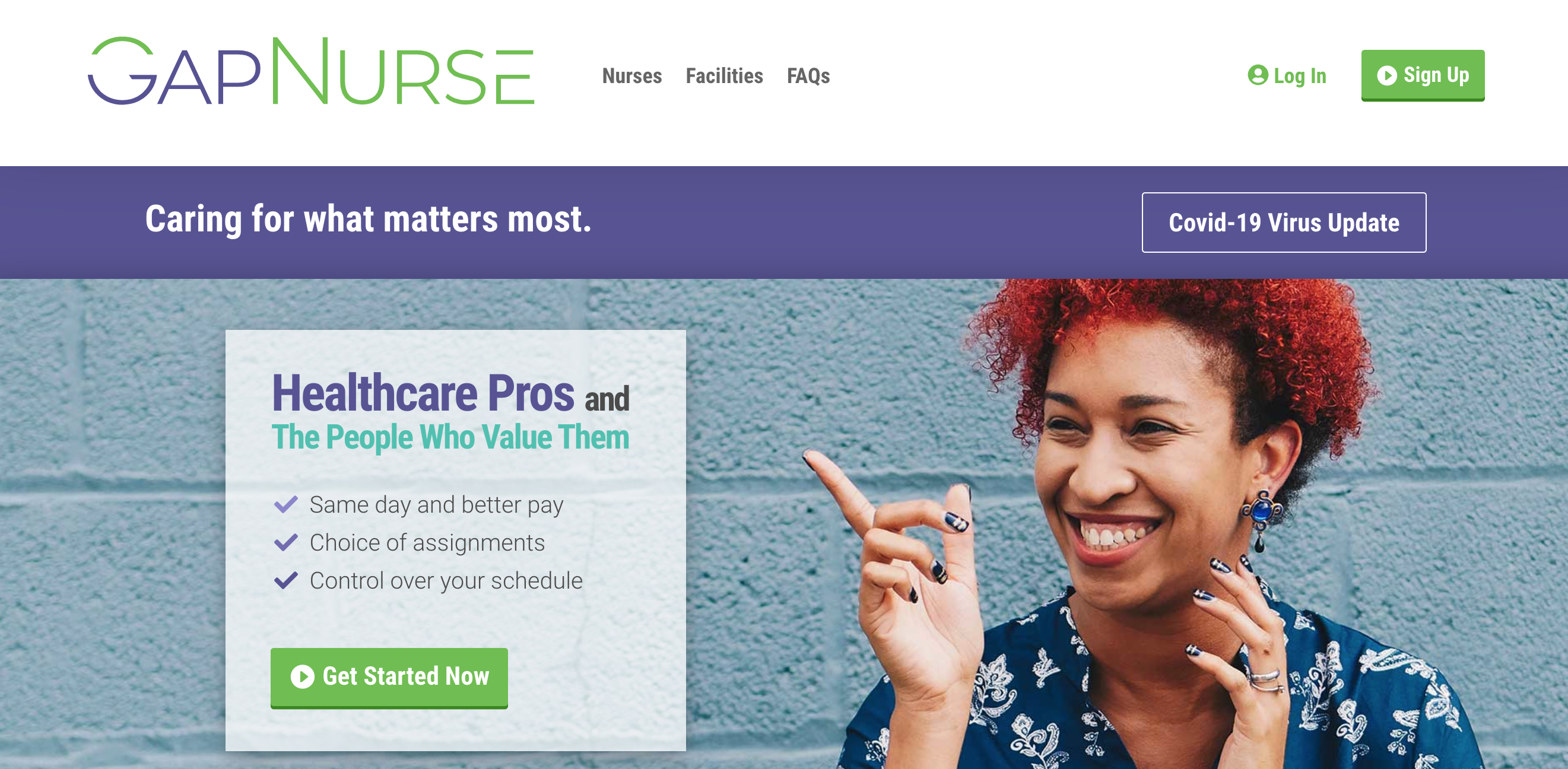
At Demigos, we have already developed an on-demand staffing platform – one that helps healthcare facilities find nurses. The platform, GapNurse, was launched in Denver, Colorado, and will soon be available in three other states.
GapNurse is web-based and seamlessly connects medical facilities with qualified care providers. The platform consists of a website for facility managers and platform administrators, along with a mobile application for nurses and employees.
GapNurse can also be used as a workforce management solution for healthcare facilities, operating as a scheduling platform for hospitals, and moving the entire process online. This approach simplifies scheduling by giving administrators an overview of shift scheduling and can also be used by medical facilities to find part-time nurses.
As you can see, the Demigos team has experience building a custom on-demand hospital staffing solution as well as healtech software development. We can design and develop a platform to optimize nursing staff management and widen the talent pool through an on-demand service. It can assist with float pool management, shift swapping, covering open shifts, payroll management, and overtime calculations.
So, if you’re looking to develop an on-demand medical staffing platform, contact the Demigos experts anytime.






